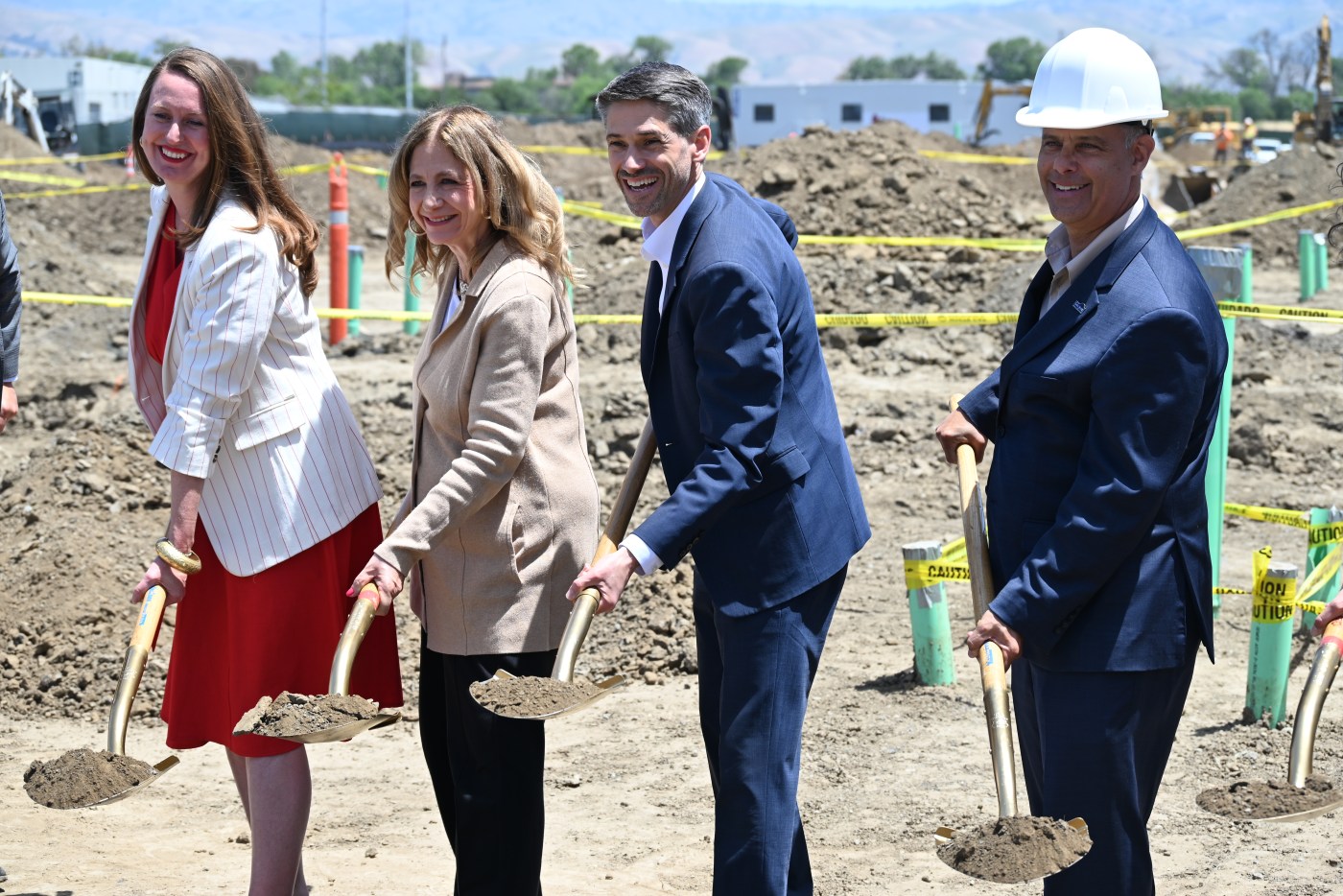
San Jose and VTA officials have broken ground on a new interim housing site in the northern part of the city that will transform a lot at the transit agency’s Cerone Yard into a 200-unit tiny home community before the end of this year.
Related Articles
California OK millions for 19 new Bay Area addiction and mental health treatment centers
If Gov. Newsom doesn’t solve California homeless crisis, can he be president?
Homeless advocates protest San Jose proposal to arrest unhoused who repeatedly refuse available shelter
Newsom calls on California cities to ban homeless encampments
Why do Bay Area homeless people turn down shelter beds?
Elected officials championed the project Thursday and lauded the partnership with VTA — which will see the city lease the multiple acres of land off of Zanker Road for the next five years — as it looks to make meaningful progress in reducing unsheltered homelessness and build out its shelter portfolio.
“If it takes this long to open 200 beds for those who are suffering and far too often dying on our streets, we are not moving with the urgency this crisis demands,” San Jose Mayor Matt Mahan said. “The Cerone interim housing site is proof that when we push, when we fight for urgency and when we refuse to back down, we can create safe, dignified places for people to call home. But it also serves as a reminder of how much work we still have to do to streamline projects like this and other solutions to the crisis on our streets.”
The tiny home community is one of several interim housing projects either under construction or in the pipeline this year. San Jose has continued to invest heavily in homelessness solutions, adding more than 1,400 placements this year between tiny homes, safe parking and safe sleeping sites, and hotel and motel conversions.
Mahan credited Gov. Gavin Newsom’s support for the project and nearly $13 million in state funding to make it a reality. City officials projected that the tiny home community would open in October, making it the fastest tiny home construction to date.
District 4 Councilmember David Cohen said the northern parts of the city, which he represents, need more interim housing solutions. He added that the safe parking site in Berryessa, which can serve 86 RVs at one time, has already graduated people living in six RVs into permanent housing in the two months since it opened, proving that interim housing solutions can be an effective means to getting residents out of unsheltered homelessness.
“We know that this is the biggest crisis we face in the city, and we’ve been working together as a council and as a city staff to address this solution,” Cohen said. “There’s no single solution to this crisis, but projects like here at Cerone are part of a larger citywide strategy to reduce street homelessness in a meaningful and sustainable way. Interim housing is more than just a shelter. It’s a bridge to services, stability and permanent housing.”
While the VTA is primarily known as a transit and congestion management agency, it has become an integral partner for local jurisdictions in the South Bay looking to increase housing supply.
The VTA is currently working on seven transit-oriented development projects around Santa Clara County that will provide more than 1,600 affordable housing units combined. Its larger vision entails building 11 million square feet of development near stations, including 7,000 units.
“We take deep pride in not just providing essential transit services to our county, but in helping build stronger and more resilient communities around our station areas,” said Jessie O’Malley Solis, the VTA’s director of real estate and transit-oriented development. “That’s why our board of directors unanimously approved to support the lease of the site to the city of San Jose. Not only is the mission of the site urgent, it is essential for our community.”
The Cerone Yard project also is the second collaboration between San Jose and the VTA. The city’s safe parking site in South San Jose operates on the VTA’s Santa Teresa lot, serving more than 40 RVs at a time.
While she was happy to see the tiny home project move forward, homeless advocate Gail Osmer was critical of the city for continuing to conduct abatements when it does not have enough shelter space for the estimated 5,500 unsheltered residents in San Jose.
“I get a little tired that everything that comes out of the city’s mouth is that 1,400 beds are coming,” Osmer said. “None of them are coming before the end of the year, and we have over 200 people at Columbus Park, and on Monday, another 40 to 50 people on Autumn Parkway are getting forced to move. Let’s not be abating these people until we have a place for folks to go.”
Mahan said San Jose would continue to engage with the VTA and other public agencies to identify potential new sites, noting that it would take a collective effort from all levels of government to address the homelessness epidemic.
“There’s a lot of public land out there, and so we’re constantly engaging with VTA, with the county, state of California, Caltrans, and other state departments, to figure out are we best leveraging our public assets to address this crisis,” Mahan said. “I think many of us feel that if we’re going to call it a crisis, (and) if we’re going to describe it as an emergency, now, we need to act like it. We need to act as though an earthquake or a fire or a flood came through and displaced 5,000 people.”